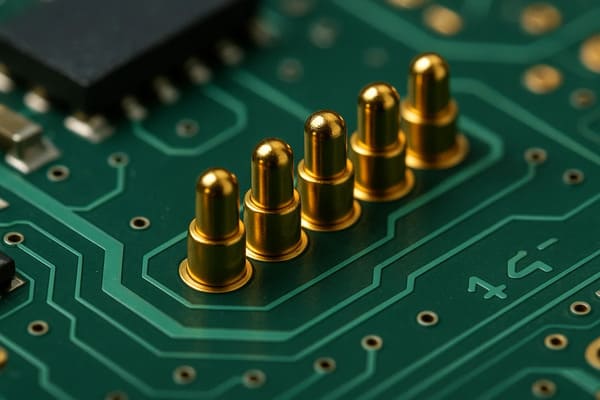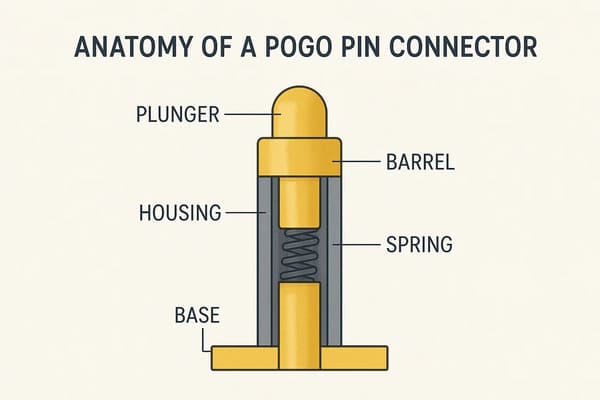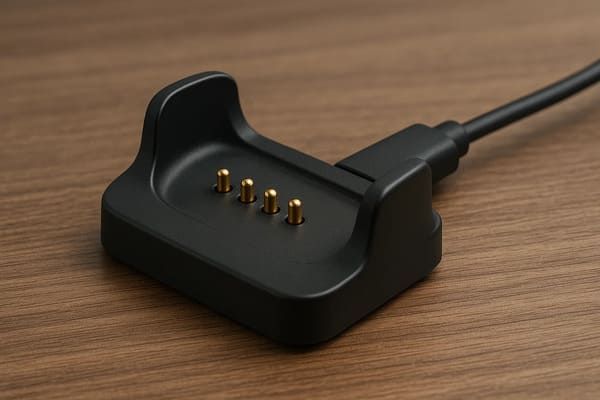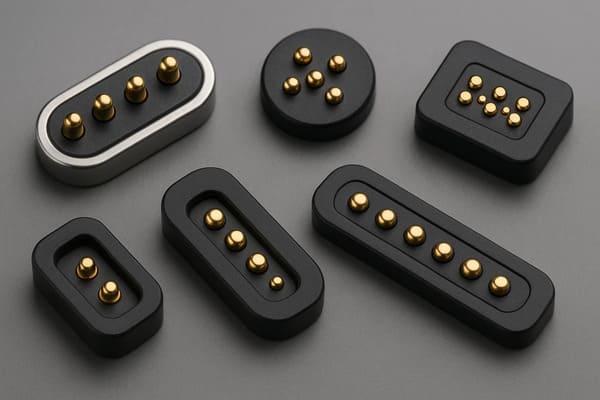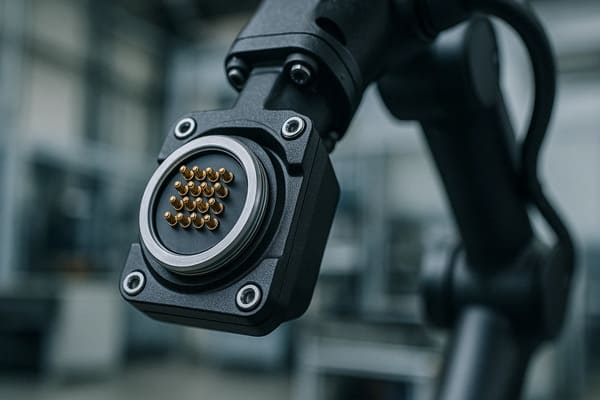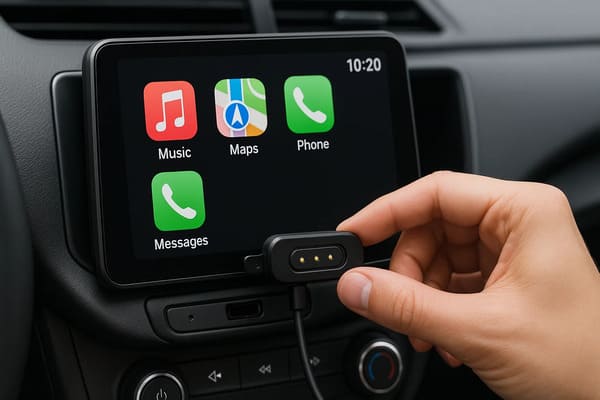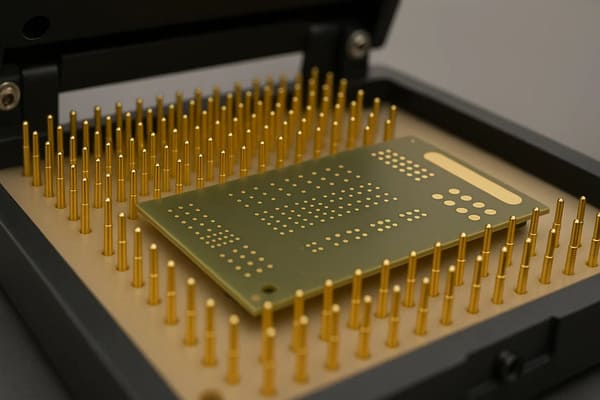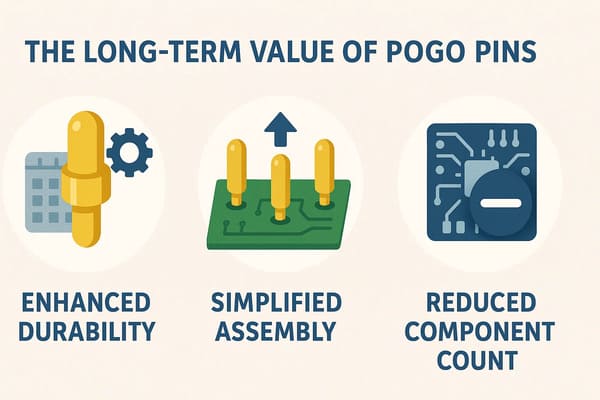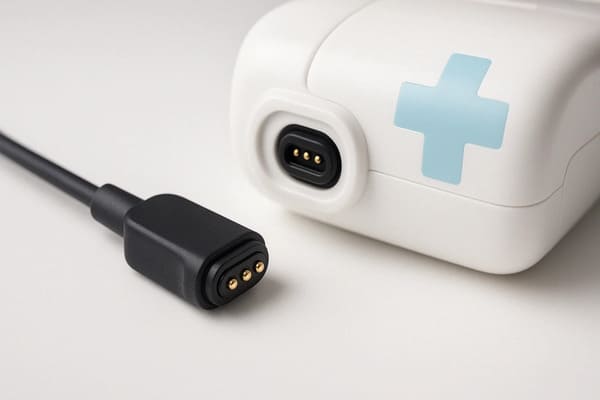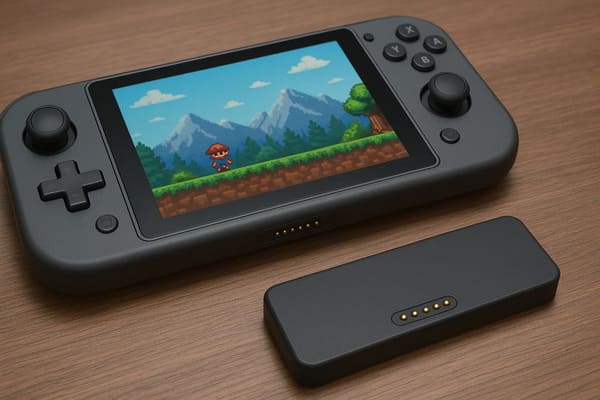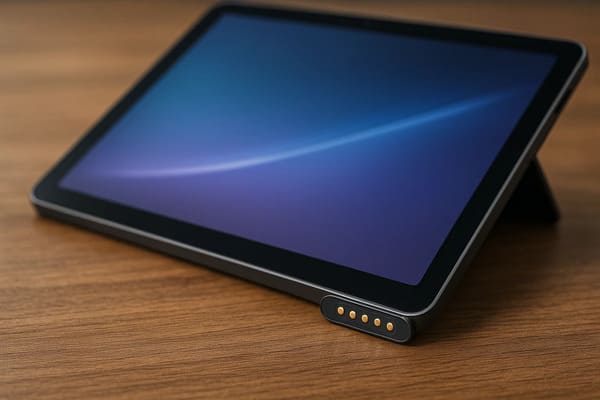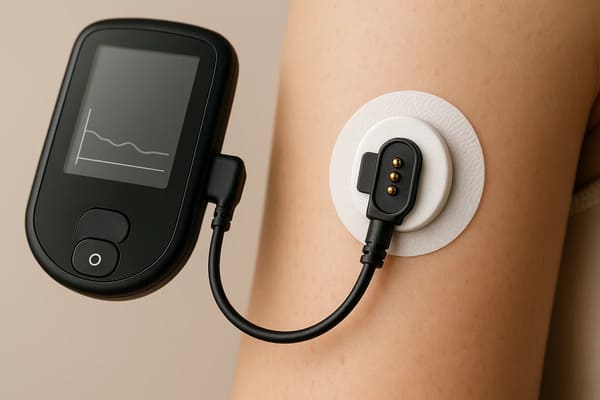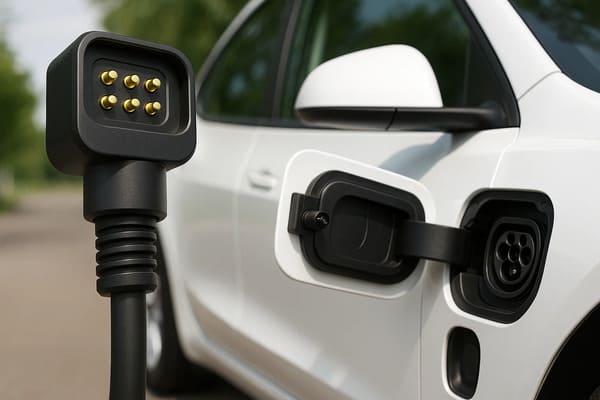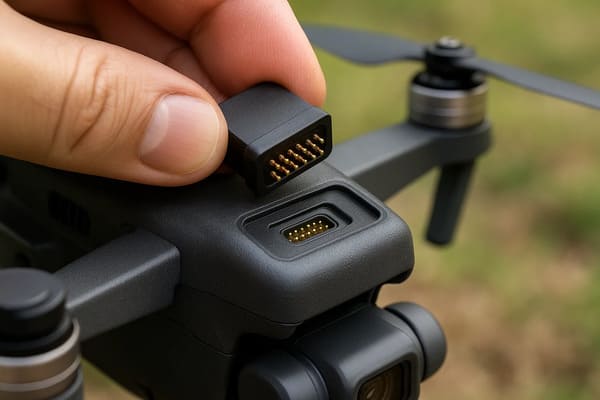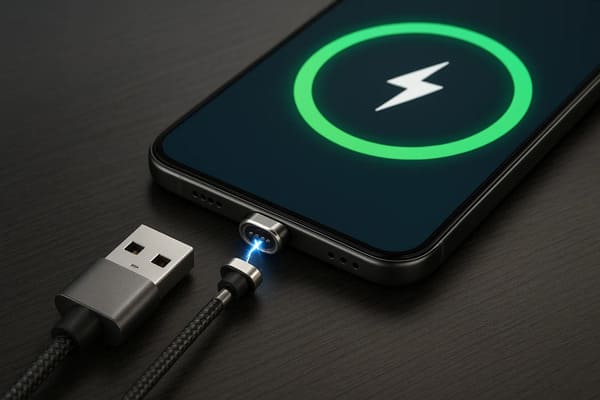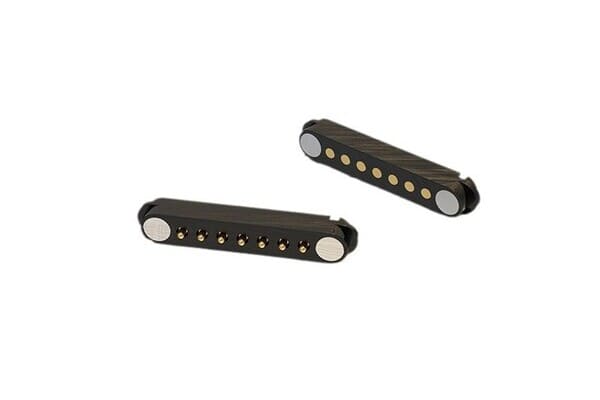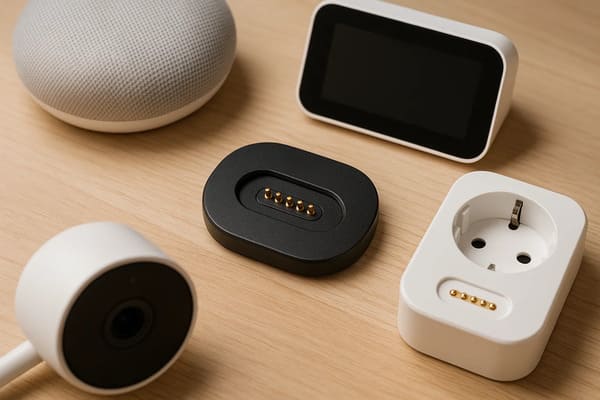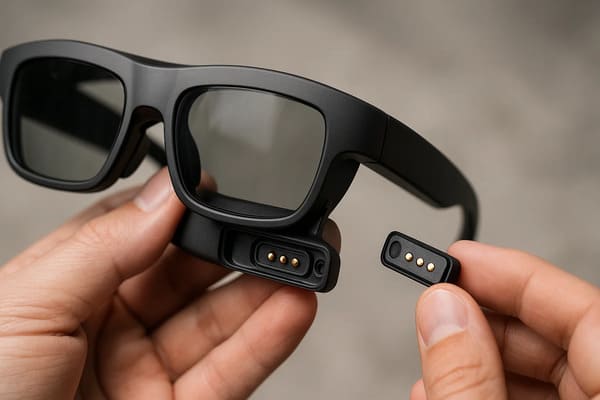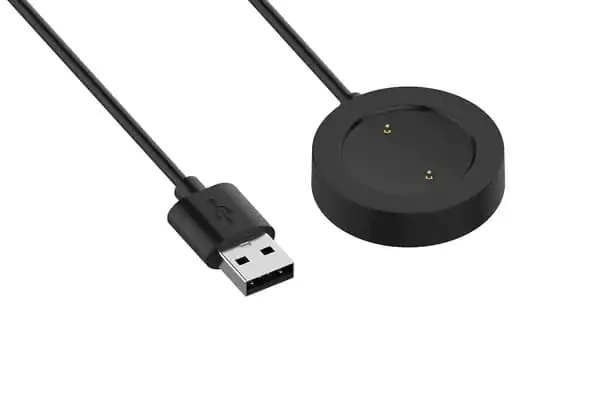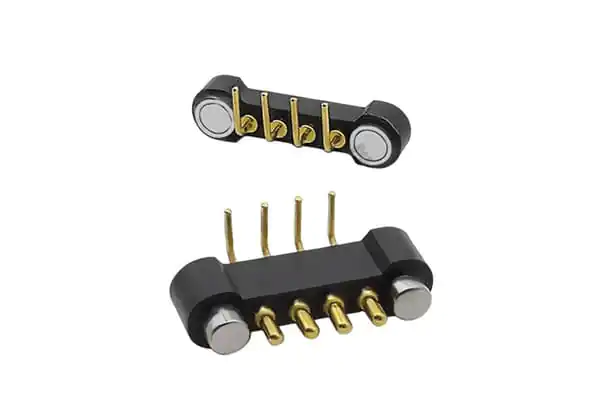Have you ever wondered how Pogo Pin Connectors help your sleek smart devices connect so effortlessly?
These tiny, springy pins play a bigger role than you think.
They are the unsung heroes ensuring your gadgets charge, sync, and power up reliably daily.
Pogo pin connectors, comprising a plunger, barrel, and spring, create temporary yet reliable electrical connections.
Their advantages include durability, high mating cycles, and excellent shock resistance, making them ideal for frequent connections.
Disadvantages can involve higher initial cost and potential for spring fatigue over extended use.
Selecting appropriate connectors is crucial; incorrect choices can lead to system failures.
This guide explores the design, advantages, and disadvantages of pogo pin connectors.
Understanding these aspects helps in making informed decisions for various projects.
It also fosters an appreciation for the clever engineering within everyday devices.
What Are Spring-Loaded Pin Connectors and How Do They Work?
Struggling with bulky, unreliable connectors that take up too much space in your compact designs?
These issues can compromise your product’s form factor and performance.
What if there was a tiny, robust solution?
Spring-loaded pins, also known as pogo pins, are electrical contacts with an internal helical spring that applies constant normal force for a secure connection.
Comprising a plunger, barrel, and spring, they maintain consistent contact even with slight misalignments or vibrations.
This design makes them ideal for demanding applications requiring durability and resilience to mechanical shock.
Understanding the Basics of Pogo Pins
Pogo pins are essentially miniature spring-loaded probes.
They are designed to provide a reliable electrical connection between two surfaces.
Think of them as tiny plungers that press against a contact pad.
This mechanism is what makes them so versatile for various applications, from charging consumer electronics to critical connections in medical devices.
The Anatomy: Plunger, Barrel, and Spring
- Plunger: This is the part that makes contact with the target surface (e.g., a PCB pad).
It’s typically made from conductive materials like brass or beryllium copper and often plated with gold for better conductivity and corrosion resistance. - Barrel: This is the outer casing that houses the plunger and spring.
It guides the plunger’s movement and provides structural support. - Spring: Usually made of stainless steel or music wire, the spring provides the force that pushes the plunger outward, ensuring a consistent contact force.
The Contact Mechanism Explained
When a pogo pin meets a contact pad, the plunger is pressed into the barrel, compressing the spring.
This compression creates a constant, reliable force ensuring good electrical contact.
The spring’s design is critical; it needs to provide enough force for a stable connection but not so much that it damages the mating surface over time.
This simple yet effective mechanism is why spring-loaded pin connectors are favored in many industries.
I remember a project for a medical device company where the precision of this contact mechanism was paramount for patient safety – a testament to the engineering behind these small wonders.
These connectors offer remarkable reliability and versatility for various electronic applications.
Their design, which ensures consistent contact and durability, makes them an excellent choice for compact designs and demanding environments.
What Are the Key Advantages of Using Pogo Pin Connectors?
Are frequent connection failures or wear and tear plaguing your devices?
This can lead to customer dissatisfaction and increased warranty claims.
Imagine a connector solution that offers superior longevity and consistent performance.
Pogo pin connectors provide notable benefits like high durability, accommodating numerous mating cycles for extended product life.
They offer excellent electrical performance with low resistance, ensuring reliable current flow.
Their compact size makes them ideal for miniaturized electronics, enabling sleek and efficient designs.
High Durability and Impressive Cycle Life
- Reduced Wear: Unlike traditional connectors that rely on friction, the rolling or wiping action of the plunger minimizes wear on both the pin and the mating pad.
- Consistent Force: The spring ensures a consistent contact force throughout the connector’s lifespan, maintaining reliable performance.
This makes them perfect for applications like test fixtures, which see constant use, and frequently docked devices such as smartwatches or handheld scanners.
Excellent Electrical Performance for Demanding Applications
- Low Contact Resistance: Well-designed pogo pins, often with gold plating, offer very low and stable contact resistance (e.g., 30 mOhms or less), which is crucial for efficient power transfer and signal integrity.
- Stable Signal Transmission: The consistent contact force helps maintain stable signal transmission, even for high-frequency signals in some specialized designs.
- High Current Carrying Capacity: Certain pogo pin designs, particularly those with larger diameters or multiple contact points within the pin, can handle significant currents, making them suitable for power delivery applications.
| Feature | Benefit | Implication for Design |
|---|---|---|
| Low Resistance | Efficient power, minimal signal loss | Better battery life, data integrity |
| Stable Contact | Reliable signal transmission | Fewer intermittent faults |
| High Current Option | Suitable for power pins | Versatile for charging |
Compact Size and Space Efficiency for Miniaturization
- Miniaturization: Pogo pins are inherently small, making them ideal for miniaturized devices where traditional connectors would be too bulky.
- High-Density Applications: They allow for high-density connections on PCBs, enabling more functionality in a smaller footprint.
- Thinner Product Designs: Their low profile contributes to thinner end-product designs, which is a key selling point for many consumer electronics.
Superior Shock and Vibration Resistance
- Maintained Contact: Even under shock or vibration, the spring helps maintain contact between the plunger and the mating pad.
- Ideal for Mobile/Rugged Devices: This makes pogo pin connectors particularly well-suited for ruggedized devices, mobile applications, and environments prone to movement or impact, like automotive or industrial equipment.
"Blind Mating" Capability for User Convenience
- Tolerance for Misalignment: The spring-loaded nature of pogo pins allows them to compensate for minor angular or parallel misalignments during mating.
- User-Friendly: This makes the connection process easier and more forgiving for the end-user, which is especially beneficial in docking stations, magnetic connectors, and charging cradles where precise alignment might be tricky.
Cost-Effectiveness in Specific Scenarios
- Reduced Assembly Time: Pogo pins can simplify assembly, often being surface-mounted or press-fit directly onto PCBs, potentially reducing labor costs.
- Elimination of Mating Connectors: In many designs, pogo pins connect directly to PCB pads, eliminating the need for a corresponding female connector, which saves on component cost and space.
The advantages of these connectors extend beyond their initial compact form.
Their design inherently supports resilience against wear and tear.
This ensures consistent performance over time, which is crucial for long-lasting electronic devices.
What Are the Potential Disadvantages of Pogo Pin Connectors?
Are you concerned about the upfront cost or the potential for environmental factors to impact your spring loaded pin connector’s reliability?
These are valid points that can make or break a design decision.
What if these drawbacks could be mitigated with careful planning?
Pogo pin connectors can have drawbacks, including a potentially higher initial cost per pin compared to simpler alternatives.
They may also be susceptible to contamination from dust or debris if not properly sealed or maintained.
Additionally, their spring mechanism can be vulnerable to damage from excessive lateral force.
Higher Initial Cost Per Pin: A Trade-off?
- Enhanced Durability: Pogo pins are designed for a long operational life, often outlasting other connector types, which means fewer replacements and less maintenance.
- Simplified Assembly: In many designs, pogo pins can simplify the overall assembly process, potentially reducing labor time and costs.
- Reduced Component Count: By sometimes eliminating the need for a corresponding mating connector, pogo pins can lead to a simpler overall design and fewer parts to manage.
Susceptibility to Contamination: An Open Issue?
- Reliability Concerns: This is a particular concern in harsh or dirty environments.
Mitigation Strategies:
- Protective Coatings: Using corrosion-resistant platings like gold can help.
- Sealed Designs: Some pogo pins are available in sealed versions or can be incorporated into designs with gaskets or other sealing mechanisms.
- Wiping Action: The movement of the plunger can sometimes provide a self-cleaning action, but this isn’t always sufficient.
- Regular Cleaning: In some applications, periodic cleaning might be necessary.
Limited Pin Count in a Single Connector Housing
- Complexity of Assembly: Managing and assembling hundreds of individual spring-loaded pins into a single compact housing increases complexity.
- Overall Size: While individual pins are small, a high-pin-count connector might still become relatively large.
For very high-density requirements (e.g., hundreds of pins), designers might consider alternative solutions or multiple smaller pogo pin arrays.
Mechanical Stress and Wear on the Mating Pad
- Pad Degradation: This wear can expose the base material of the PCB pad, leading to increased contact resistance or connection failure.
- Design Considerations: The material and plating of the PCB pad are crucial.
Hard gold plating on the PCB pad is often recommended for high-cycle applications to withstand mechanical stress.
The spring force of the pogo pin should also be carefully chosen to be adequate for connection but not excessive.
Design Complexity for Optimal Performance
- Spring Force: Needs to be matched to the application to ensure reliable contact without excessive wear.
- Travel Distance: The working travel of the pin must be appropriate for the mechanical tolerances of the assembly.
- Plating & Materials: Choices impact conductivity, durability, and corrosion resistance.
- Mating Surface: The design of the mating surface is equally important.
While these connectors offer many benefits, understanding their potential disadvantages is key.
Careful consideration of environmental factors, design complexity, and material choices can help mitigate these issues effectively.
This ensures reliable performance across diverse applications.
Where Are Pogo Pin Connectors Commonly Used?
Ever wonder what connects the charger to your smartwatch or enables the intricate testing of complex circuit boards?
These tasks often rely on the versatility of pogo pins, but their applications are broader than many realize.
Pogo pin connectors see common use across various sectors.
They are integrated into consumer electronics such as smartwatches and tablets for charging.
Medical devices and industrial test equipment also utilize them for reliable connections.
Furthermore, their application extends to automotive infotainment systems and robotics.
Consumer Electronics: The Smart Revolution
- Smartwatches & Fitness Trackers: Charging pucks and data sync connections almost universally use pogo pins, often magnetic pogo pin connectors for ease of use.
- Tablets & Laptops: Docking stations and keyboard attachments frequently employ pogo pins for power and data.
- Gaming Controllers: Charging docks and sometimes even internal connections utilize them.
- Audio Devices: True wireless earbuds and their charging cases are prime examples.
Medical Devices: Precision and Reliability
- Diagnostic Equipment: Connections for probes, sensors, and interchangeable modules.
- Wearable Health Monitors: Similar to consumer wearables, these devices use pogo pins for charging and data transfer, often requiring high reliability and biocompatible materials.
- Portable Medical Devices: Handheld scanners, patient monitors, and drug delivery systems benefit from their compact and durable nature.
Industrial and Test & Measurement: The Unseen Workhorses
- ATE (Automated Test Equipment) Fixtures: Test heads use arrays of pogo pins to make temporary contact with PCBs or components for functional testing.
Their high cycle life is essential here. - Programming Interfaces: For programming microcontrollers or FPGAs on production lines.
- Board-to-Board Connections: In modular industrial systems where components need to be easily replaceable.
Automotive: Connectivity on the Move
- Infotainment Systems: Connections for displays, control panels, and media modules.
- EV Charging: While high-power charging uses larger connectors, pogo pins can be found in the control signal paths of some EV charging interfaces or for onboard electronics.
- Sensor Connections: These are for various sensors within the vehicle.
The vibration resistance of spring-loaded pins is a key advantage here.
Robotics and Drones: Modular and Mobile
- Modular Connections: For easily swapping tools, batteries, or sensor modules on robots.
- Charging Ports: These are for autonomous charging stations for drones and mobile robots.
- Compact Interconnects: Within the tight confines of drone bodies or robotic arms.
This wide array of applications highlights the adaptability of spring-loaded contacts. Their reliability and compact design make them invaluable for evolving technological needs. As devices become more integrated and modular, the use of these connectors continues to expand.
How Do I Choose the Right Spring Loaded Pin Connector for My Design?
Selecting a connector seems simple, but the wrong choice can derail your project.
With so many variables, how do you ensure you’re picking the pogo pin that truly meets your needs for performance and reliability?
Selecting a suitable spring-loaded pin connector involves evaluating several design parameters.
Key considerations include current and voltage requirements, environmental conditions, and expected mating cycles.
Space limitations, target cost, and material specifications also play a crucial role in making the optimal choice for a design.
Key Design Considerations for Pogo Pins
- Current and Voltage Requirements: Will the pin carry power, signal, or both? This dictates the required size and material of the pogo pin and its internal spring.
High-current pogo pins are designed differently than those for low-current signals. - Environmental Factors:
- Temperature: Will the device operate in extreme heat or cold?
This affects material choice, especially for the spring. - Humidity/Moisture: Is waterproofing or corrosion resistance needed?
Consider sealed pogo pins or specific platings.
- Temperature: Will the device operate in extreme heat or cold?
- Mating Cycles: How many times will the connector be mated and unmated over its lifetime?
This influences the required durability and plating thickness. - Space Constraints: What is the available height, width, and pitch for the pogo pin connectors?
This is often a driving factor in consumer electronics. - Target Cost: While performance is key, budget often plays a role.
Balance the ideal pogo pin features with cost-effectiveness for your application volume.
Critical Material and Plating Choices for Pogo Pins
- Plunger & Barrel Materials: Commonly brass or beryllium copper for good conductivity.
Phosphor bronze is also used. - Spring Materials: Stainless steel (SUS304, SUS301) is common for its spring properties and corrosion resistance.
Music wire can also be used. - Plating: This is crucial!
- Gold Plating: The most common choice for contact surfaces due to its excellent conductivity, corrosion resistance, and durability.
Thickness varies (e.g., 3µ" to 50µ") depending on cycle life and environmental requirements. - Nickel Plating: Often used as an underlayer for gold to improve adhesion and provide a diffusion barrier.
- Other Platings: Palladium, rhodium, or specialized alloys might be used for specific high-performance or cost-sensitive applications.
- Gold Plating: The most common choice for contact surfaces due to its excellent conductivity, corrosion resistance, and durability.
| Plating Material | Primary Advantage | Common Use Case |
|---|---|---|
| Gold | Excellent conductivity, corrosion resist | Most applications, high reliability |
| Nickel | Underlayer, hardness | Standard under gold plating |
| Palladium-Nickel | Durability, cost vs. pure gold | High cycle, cost-sensitive |
Customization vs. Off-the-Shelf Pogo Pins
- Off-the-Shelf Pogo Pins:
- Pros: Readily available, lower cost for small quantities, proven designs.
- Cons: May not perfectly fit unique space or performance requirements.
- When appropriate: Prototyping, standard applications with flexible design constraints, and lower volume projects.
- Custom Pogo Pin Solutions:
- Pros: Tailored to exact specifications (length, spring force, diameter, materials, plating, mounting style), optimal performance for unique applications.
- Cons: Higher initial NRE (Non-Recurring Engineering) costs, longer lead times for samples and production.
- When appropriate: High-volume production, unique mechanical or electrical requirements, when performance is paramount, or when an innovative solution is needed.
The optimal choice depends on balancing electrical and mechanical needs with budget and manufacturing considerations.
Thoughtful selection ensures reliable performance and seamless integration into the final product.
What are the Future Trends and Innovations in Pogo Pin Technology?
Are you wondering if today’s pogo pins can keep up with tomorrow’s tech demands?
The world of electronics is always evolving, pushing for faster, smaller, and more reliable components.
So, what’s next for these tiny connectors?
Future pogo pin innovations focus on advancing high-frequency capabilities and improving waterproofing for diverse environments.
Trends also include magnetic and floating designs, aiming for enhanced user experience and adaptability.
Increased customization will support integration into emerging technologies like 5G and IoT devices.
Technological Advancements in Pogo Pin Design
- High-Frequency Capabilities: As data rates soar, there’s a growing need for pogo pins that can handle high-frequency signals (e.g., up to 10 Gbps or even higher for RF applications) with minimal loss and interference.
This involves careful design of the pin’s geometry and materials to control impedance. - Enhanced Waterproofing: With more devices being designed for outdoor or rugged use, the demand for IP-rated waterproof pogo pin connectors (e.g., IP67, IP68) is increasing.
This involves integrating seals and using corrosion-resistant materials. - Magnetic and Floating Designs: Magnetic pogo pin connectors, which use magnets to guide and secure the connection, are already popular for their ease of use.
Future trends may see more sophisticated magnetic designs and "floating" pogo pins that offer even greater tolerance for misalignment and Z-axis variation, enhancing the user experience. - Miniaturization and Higher Density: The drive for smaller devices continues.
Expect to see even smaller pogo pins and connector arrays that pack more connections into tighter spaces.
Emerging Applications Driving Pogo Pin Innovation
- 5G Devices: The rollout of 5G technology requires components that can support higher frequencies and data rates. Pogo pins will play a role in internal board-to-board connections and potentially in some antenna connections.
- Internet of Things (IoT): The proliferation of IoT devices – from tiny sensors to smart home appliances – means a massive need for reliable, compact, and often low-power connectors. Pogo pins are well-suited for many IoT applications.
- Advanced Wearables: Beyond smartwatches, we’re seeing more sophisticated medical wearables, augmented reality glasses, and smart textiles, all of which require intricate and reliable interconnections.
- Robotics and Automation: As robots become more complex and collaborative, the need for quick-change end effectors and modular components will drive demand for robust and reliable pogo pin connector systems.
Growing Emphasis on Customization Trends
- Tailored Solutions: There’s a growing trend away from purely off-the-shelf components towards more customized pogo pin solutions. This includes:
- Specific spring forces to match application requirements.
- Unique plating options for specialized environments (e.g., medical, industrial).
- Custom mounting styles (SMT, through-hole, right-angle, cable termination).
- Specific pin heights, travel, and diameters.
- Application-Specific Designs: Manufacturers like us are increasingly working with clients to co-design pogo pins that are optimized for a particular product or application.
This collaborative approach ensures the best possible performance and integration.
A recent project involved developing a custom magnetic charging cable with a unique pogo pin array for a specialized handheld scanner, ensuring both secure data transfer and quick, reliable charging.
| Trend Area | Key Development | Impact on Pogo Pins |
|---|---|---|
| High-Frequency Performance | Faster data rates (e.g., 10 Gbps+) | Impedance-controlled designs, new materials |
| Waterproofing | Increased use in outdoor/harsh environments | IP-rated seals, corrosion-resistant materials |
| User Experience | Magnetic alignment, floating contacts | Easier, more reliable mating, greater misalignment tolerance |
| Customization | Application-specific needs | Tailored spring forces, platings, form factors |
Pogo pin technology is evolving rapidly, driven by the demands of next-generation electronics.
Focusing on these trends will help ensure your designs leverage the most advanced and suitable connector solutions available.
Conclusion
Pogo pins provide versatile, reliable connections.
CTP, an experienced manufacturer, offers quality standard or custom magnetic pogo pin solutions, from prototype to production.
For precision pogo pins and magnetic cables, explore our website for more details or contact our expert team directly through our contact page to discuss your specific project needs.

